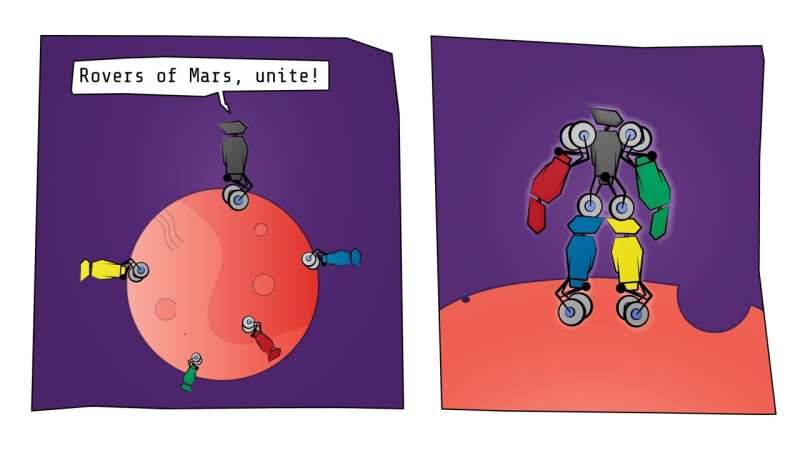student and the study's first author Alexander Petrovsky commented. "We found that using one six-wheeled rover can be suboptimal. According to our calculations, four two-wheeled machines are the best way to go. Each would carry unique research tools with only the critical payload present in all four modules."
That way, even when three of the four robots fail, the remaining one can still do a fair amount of work and transmit its findings to Earth. This maximizes the ultimate results of the mission by the time it terminates. When performing operations that require maximum stability—such as grabbing things—a pair of rovers with two wheels could assemble into a four-wheeler to be on the safe side and avoid falling over.
"Basically, reduced stability is the main drawback, with all the other parameters we considered looking reasonably good or better for the swarm rover scenario," Petrovsky added. "That said, two-wheeled robot technology has come a long way toward making those things more stable than they used to be, so even that is somewhat less of an issue now."
The scientist continued, "Artificial intelligence technologies supervising the swarm of mobile robots will open the doors to a new technological level of planetary exploration." According to him, swarm robot technology intended for Mars exploration could also benefit lunar missions and even projects on Earth. For example, similar two-wheeled robots could be deployed to monitor the growth of agricultural plants and detect pests or diseases affecting them. "In July 2021, we did some field tests with small two-wheeled robots on crops in Krasnodar, Russia," Petrovsky said. Besides this, the modular approach could also benefit robotics developed for search and rescue operations.



